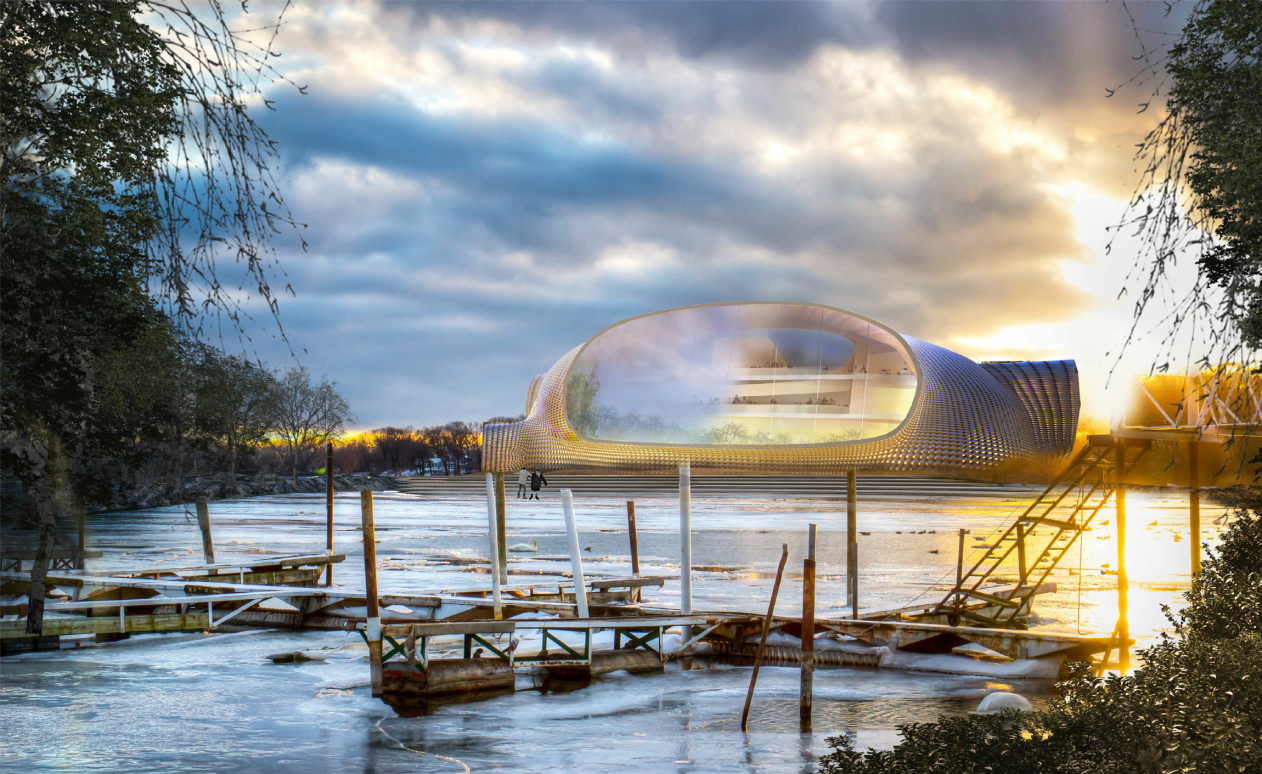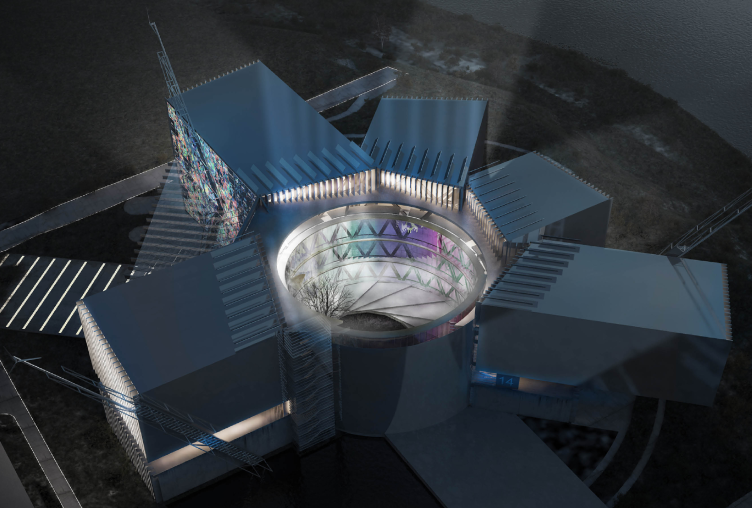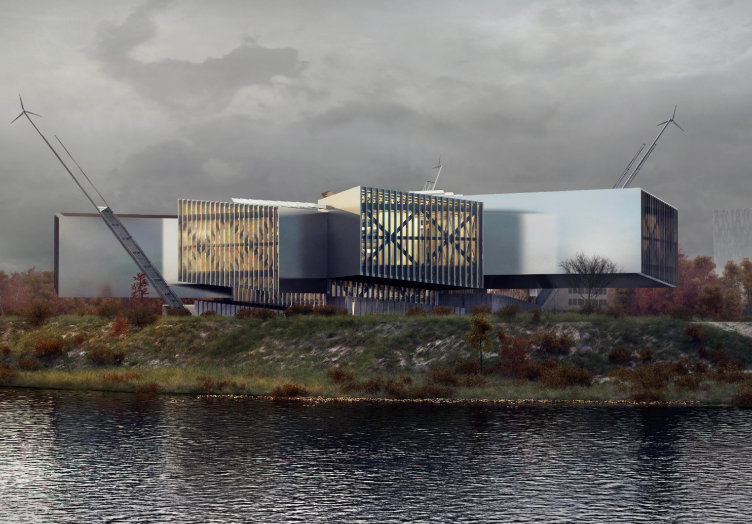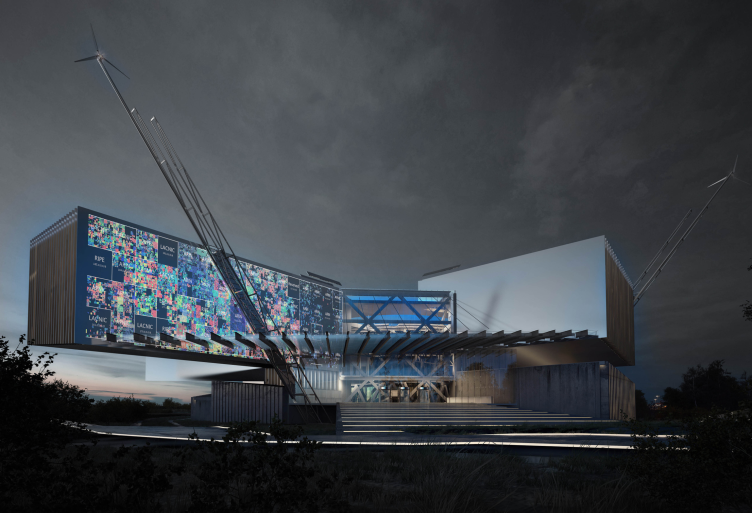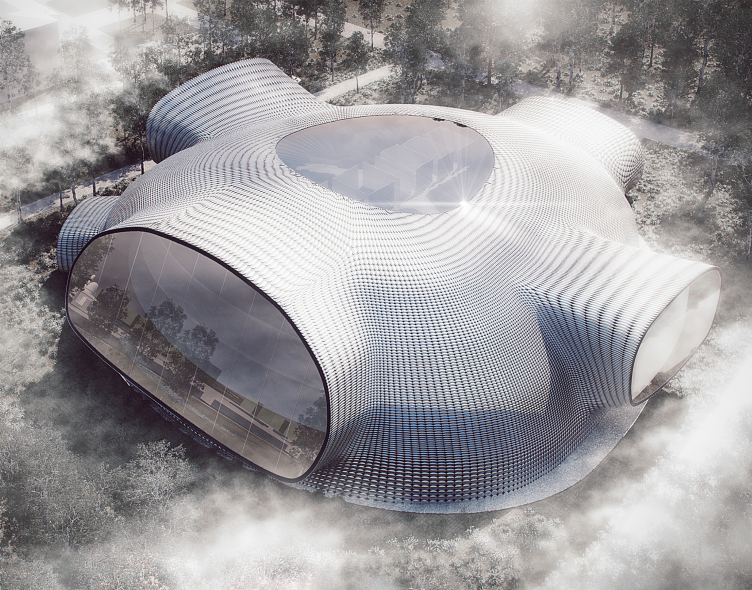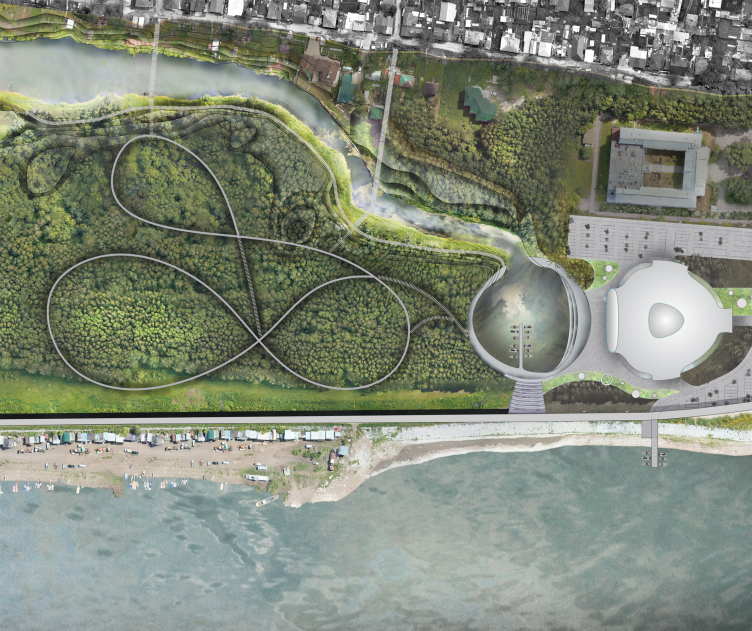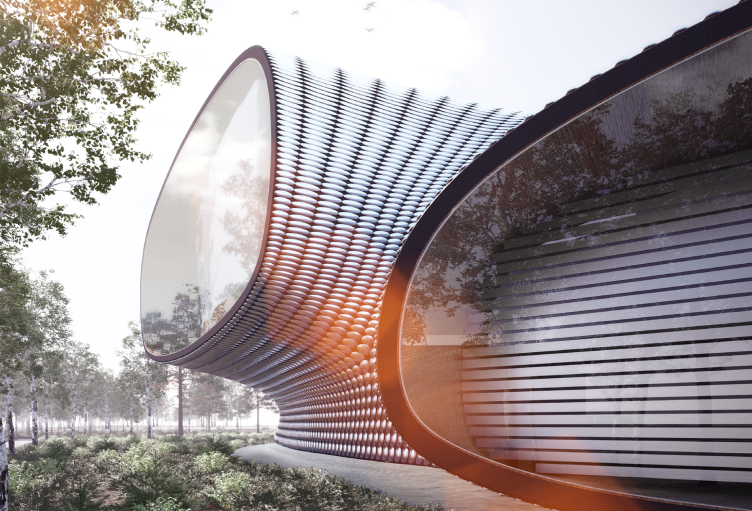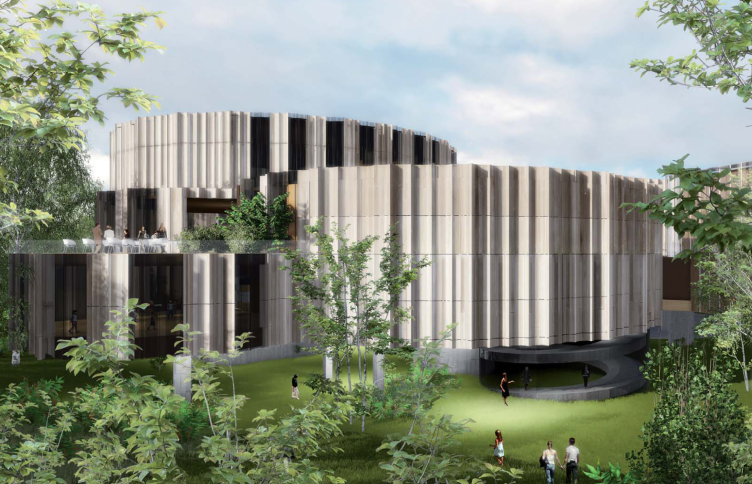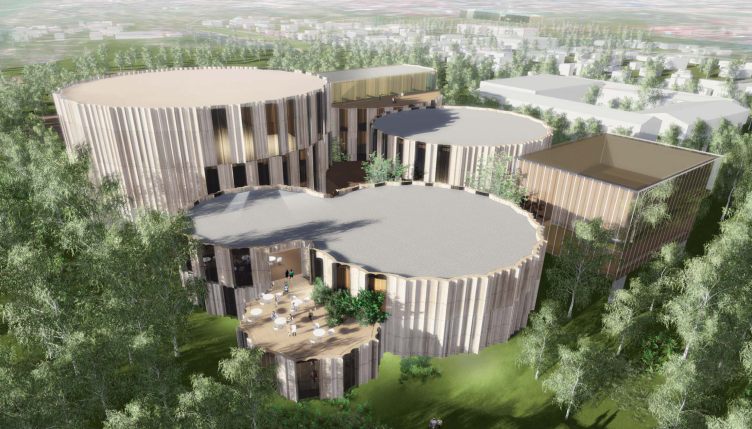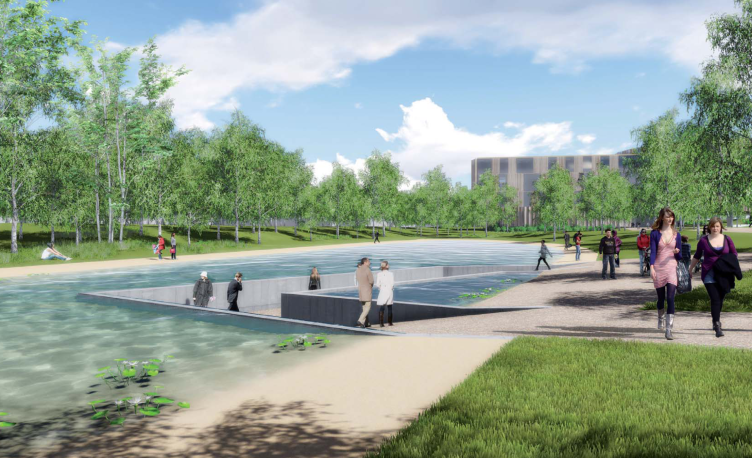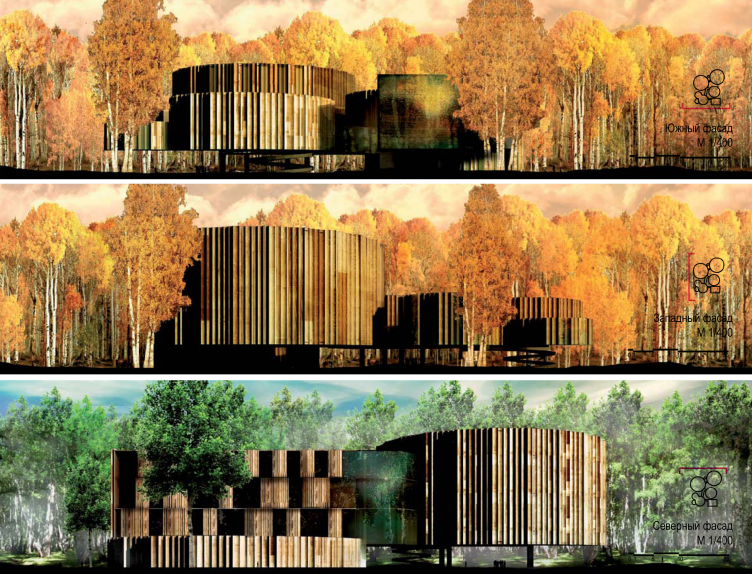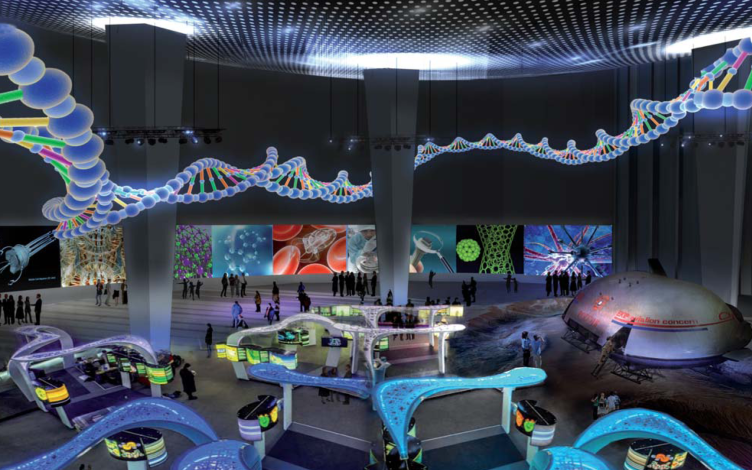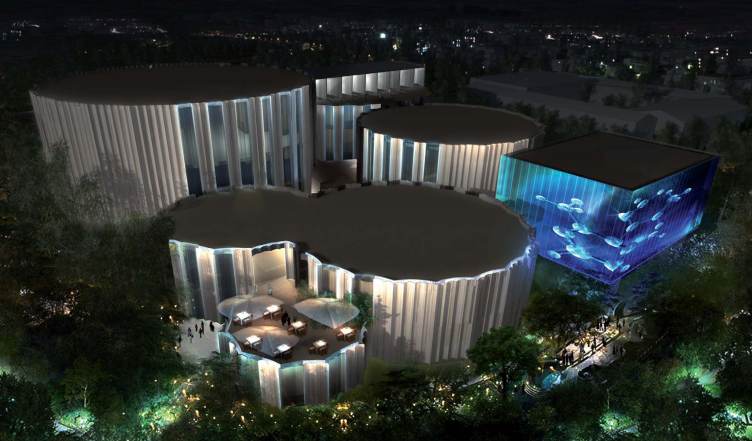Below are three other projects that were also shortlisted in the contest finals: by Moscow's "Archstructure", Slovenian "Ofis arhitekti", and Spanish consortium RAS + Francisco J.Mangado Beloqui arch.
We remind you that the contest was announced in July, was organized by the Architects Union, and its first round included 18 foreign teams, 33 - from Moscow and Saint-Petersburg, and twelve - from other regions of Russia. After considering the 63 contest proposals, the judging panel shortlisted five teams to pass into the second round. The winner was announced in November. The building of the museum was to become part of a grand-scale landscaping project of the Tom' River, while the ideologic motto of the contest was "science for people".
***
"Archstructure"Science and Technology Museum in Tomsk. Authors: "Archstructure" (Moscow)
In the version proposed by "Archstructure", the volumes of the museum premises are strung upon a "diaphragm pivot", its nucleus being the circular yard territory. The whole project is based on the idea of the famous spiral ramp that was once so successfully used in New-York's Guggenheim Museum. In this case, however, the ramp is not on the outside but on the inside, or, to be more exact, the spiral of the ramp unwinds indeed like a spring - inside of it, there is a yard followed by the petals of the museum halls. At night, the yard glows on the dark, accentuating its role of the main axis of the museum.
The inclination of the ramp is no more than 5%, so one will have no difficulty moving either up or down the ramp. For the shortcut, a panoramic elevator is provided. The exhibition spaces are situated in the upper helix of the spiral and are in fact autonomous transformer volumes. They work on the principle of a theater stage that can be used for any kinds of decorations. The middle helix of the spiral houses the laboratories: while ascending or descending the ramp, the visitors could take a peek at the scientists' work. The bottom helix includes the public spaces. Not far away from the entrance, there is a cafe, a grocery store, and a movie theater.
Science and Technology Museum in Tomsk. Authors: "Archstructure" (Moscow)
Science and Technology Museum in Tomsk. Authors: "Archstructure" (Moscow)
Science and Technology Museum in Tomsk. Authors: "Archstructure" (Moscow)
Science and Technology Museum in Tomsk. Authors: "Archstructure" (Moscow)
***
Ofis ArhitektiScience and Technology Museum in Tomsk. Authors: "Ofis Arhitekti" (Slovenia)
According to the architects, the building is designed in the shape of an igloo as the form that is climatic-proof like no other. Such shape allows for creating a structure that is open and practically support-free. The green plants around it are kept almost completely intact. Inside the building, there are five levels, the visitors moving in a spiral, just like in the previous project. According to the authors, ascending the spiral, the visitors will be able to make a "chronological" journey over the main stages of development of science and technology. All the levels are united by the central space of the atrium designed for the temporary expositions - this atrium, according to the concept, symbolizes the human heart; from the atrium, one can see all the five levels and plan his or her particular route. The exhibition spaces are extremely versatile and easily transformable.
Science and Technology Museum in Tomsk. Authors: "Ofis Arhitekti" (Slovenia)
Science and Technology Museum in Tomsk. Authors: "Ofis Arhitekti" (Slovenia)
Science and Technology Museum in Tomsk. Authors: "Ofis Arhitekti" (Slovenia)
Science and Technology Museum in Tomsk. Authors: "Ofis Arhitekti" (Slovenia)
Science and Technology Museum in Tomsk. Authors: "Ofis Arhitekti" (Slovenia)
***
RAS + Francisco J.Mangado Beloqui, archScience and Technology Museum in Tomsk. Authors: RAS + Francisco J.Mangado Beloqui, arch (Spain)
The shape of the building divided into five blocks looking simultaneously like fragments of fluted columns, tree trunks, and the gears of some gigantic machine symbolizes the interaction of science and nature. The blocks, each of which performs its own particular function, are connected by corridors. The cylindrical parts are decorated by wood which will produce the effect of a "living forest". Part of the museum program will be carried outdoors, into a specially created park: from the museum into the park, stretch trails and paths, one of which "dissolves" in the lake, and the other, conversely, allows for the visitors to walk among the trees. Totally, there are seven exhibition platforms on the territory of the park, each accessed by a dedicated trail of its own.
Science and Technology Museum in Tomsk. Authors: RAS + Francisco J.Mangado Beloqui, arch (Spain)
Science and Technology Museum in Tomsk. Authors: RAS + Francisco J.Mangado Beloqui, arch (Spain)
Science and Technology Museum in Tomsk. Authors: RAS + Francisco J.Mangado Beloqui, arch (Spain)
Science and Technology Museum in Tomsk. Authors: RAS + Francisco J.Mangado Beloqui, arch (Spain)
Science and Technology Museum in Tomsk. Authors: RAS + Francisco J.Mangado Beloqui, arch (Spain)

